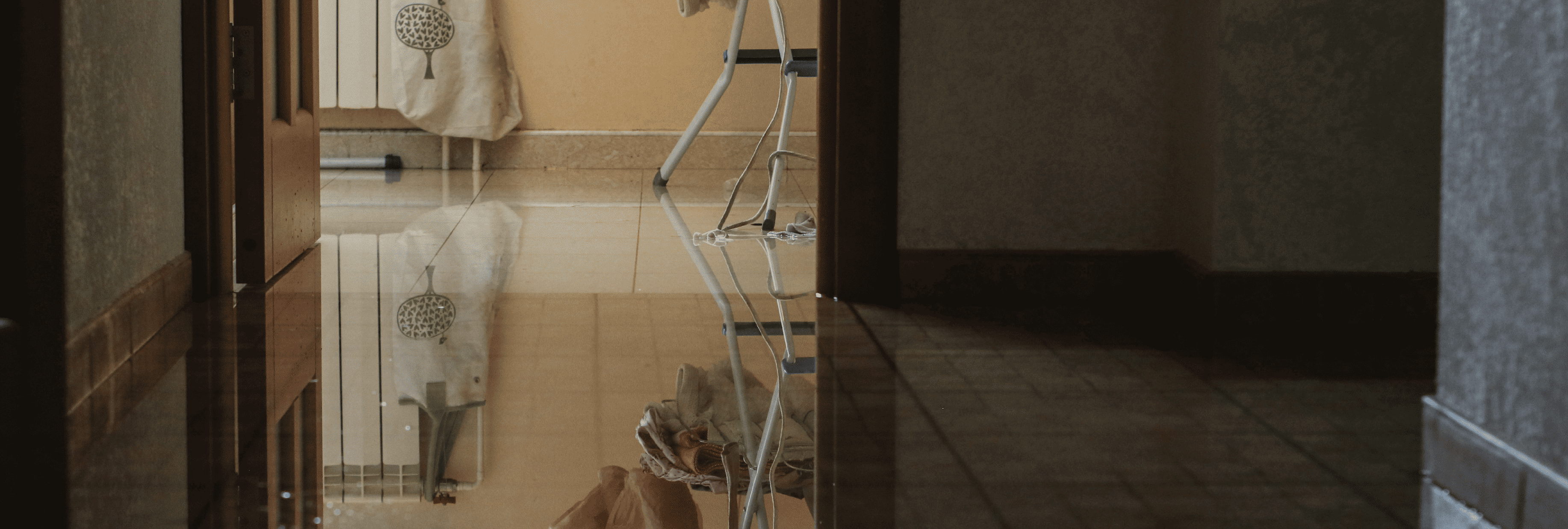Is sopping water up a homeowner do-it-yourself job?
You step out of bed at 6 am into 3 inches of water. Your home is flooded. What do you do, and can you fix it? Whether or not a homeowner can repair water damage depends on the extent of the water-flooded area, the type of water, and the speed at which the wet areas can be dried out and the damage mitigated. Speed is critical to how much of the structure is damaged, and how hard the repair will be.
If you step into 3 inches of water in your first-floor bedroom, chances are, it’s not a DIY fix. The sources of water are far from the sleeping area, be it kitchen, bathroom, laundry room, a pipe in the wall, or an exterior waterflow source. By the time 3 inches of water accumulates in a room without a water source, the extent of the wet area and the damage is already extensive. If the bedroom is on the second floor, and you have 3 inches of water on the floor, you’re really in trouble.
One of the most common losses for a home or business owner is water. In the US, an average of 14,000 insured buildings experience a water damage emergency EVERY DAY. 1 out of every 3 insured homeowners will experience water damage at some point. If the home has a basement, this goes up to 98%. Loss to water damage is common, but the costs of those losses are enormous. The average insurance claim for water damage is just under $7000, and the annual insurance industry cost to repair water and mold damage is close to $2.5 BILLION.
Water from a spill, leak, flood, or broken fixture, leaky pipe, or appliance moves fast & causes far-reaching damage that requires extensive repairs & restoration. Water warps and decomposes woods, stains and destroys textiles and furnishings, corrodes steel and other metals, and can cause short circuits to electrical systems that can create fire hazards. Within 24 hours, your flooded home begins to mold, and microbial growth appears in areas or items that are not dried out promptly or properly.
The clock is ticking on a flooded home. What should you do in the case of a sudden water damage emergency? Or when you discover hidden, longer-term leaks & damage? Can you dry your home out after a flood?
SUDDEN WATER EMERGENCY OR FLOOD
- Safety concerns first. People, pets & valuables secured.
- Turn off or unplug power sources if electrical wires or appliances are involved.
- Locate and stop the source of the water, if possible; if not call an expert to help.
- Contact a damage repair company so they can mobilize. Time is critical.
- Remove standing water if possible. Use wet & dry vacuums, a sump pump, towels.
- Begin drying out the areas with fans & airflow.
- Remove wet belongings & household items.
- Wet/dry vacuum or remove wet, soggy carpet.
- Seal smaller items in baggies & place in the freezer to dry out later; books, small valuables, clothing, jewelry, leather, anything that you don’t have time to dry properly.
- Contact your insurance company.
- Identify type of water: there are three types of water, clean, grey, or black.*
*CLEAN: water from rain, condensation, leaky household pipes, etc. This water is relatively harmless to clean it up yourself.
*GREY WATER: water from dishwashers, washing machines, clean toilets, etc. Might have mild contaminants. Clean it up yourself carefully using proper safety gear.
*BLACK WATER: water from sewage or serious flooding from nearby rivers, etc. This water contains waste, bacteria and other serious or hazardous contaminants. DO NOT clean it up yourself. Contact a clean-up professional immediately.
IDENTIFYING LONG-TERM LEAKS, MOISTURE & WATER DAMAGE
- Musty odors
- Visible stains or mold
- Peeling paint or drywall
- Warped floors or drywall
- Other changes to floor, walls or ceilings
- Outdated or rusty pipes or fixtures
- Water under house or in basement
- Sudden spike in electric bill that might indicate a leak
- Pump running for no reason
Some long-term water damage situations might be a homeowner do it yourself repair. If a pipe is leaking under a sink, and the damage is contained to the sink cabinet itself, and has not gone into or under the floor or wall, or caused mold or rot to the walls or subfloors, then simply repairing the leak, updating fixtures, and replacing the cabinet would be uncomplicated for the clever homeowner. An exterior wall faucet may have a leak from freezing, or because of a faulty washer. Some of these faucets have components that can be purchased and replaced. If the leaky faucet or a broken feeder pipe has leaked into a wall, or caused standing water under the house, this larger problem would call for a damage repair company.
With all water damage situations, time is critical. If a known leak is allowed to continue to damage the home, insurance companies may become less inclined to pay for the secondary damage, depending on your coverage. All water damage begins to compound after 24 hours. Whatever you decide, do not wait. Time is critical and costly when water damages your home or business. The best outcome is achieved when a water damage expert can begin mitigation and repairs within the first hours following the water damage emergency.
Disaster Response is on call day and night, seven days a week, 365 days a year, with experts and equipment to assure that your flooded home suffers the least amount of damage, and receives the most expert repairs ) to restore your home as quickly as possible. If you discover water damage, moisture damage, or leaks in your home call Team DR at (844) 315-3100.


